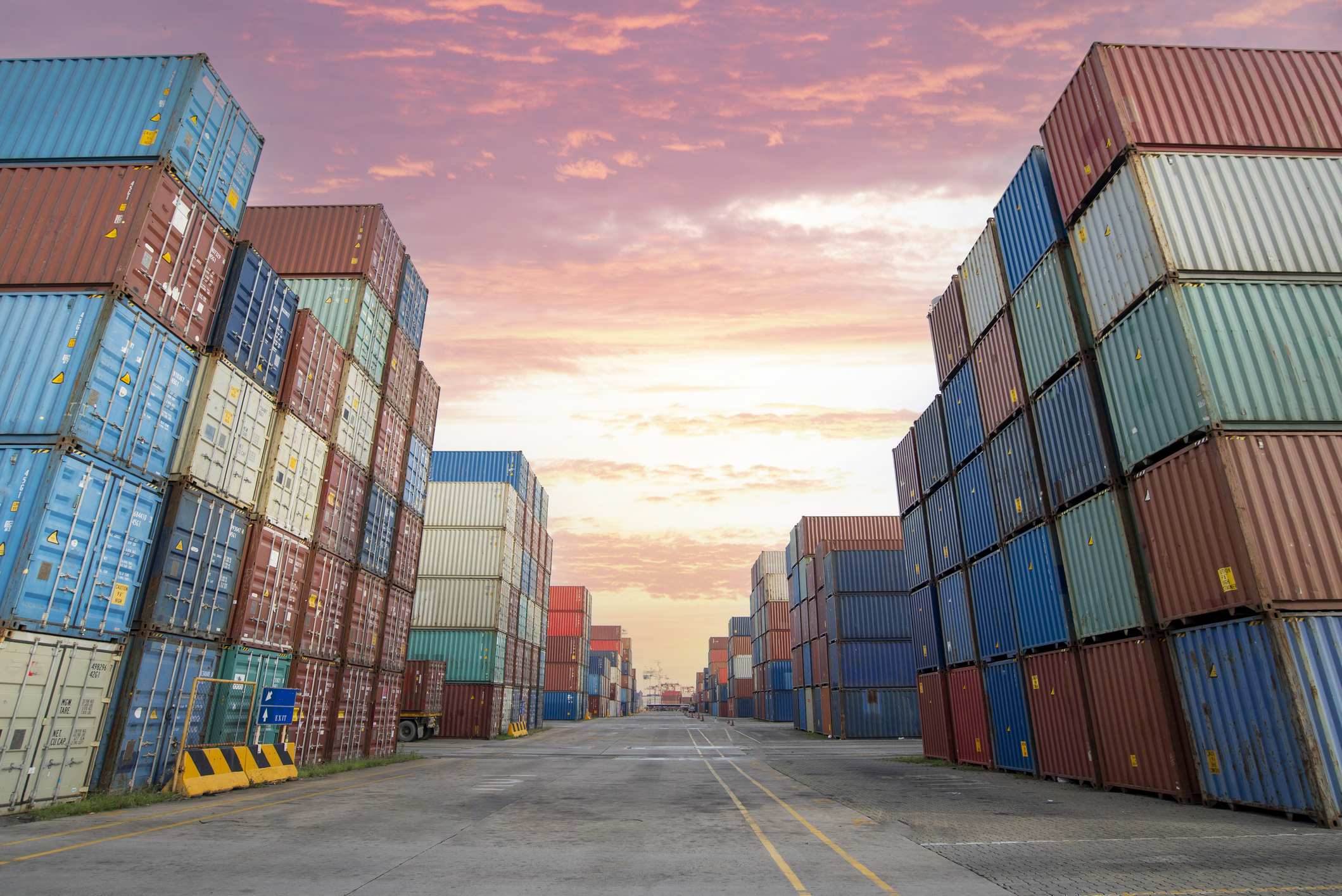How Tariffs Work and What They Mean for You in 2025
President Donald Trump is raising tariffs on all foreign goods, but how do tariffs work, and who pays?When you purchase through links on our site, we may earn an affiliate commission. Here’s how it works.
(Image credit: Getty Images)

By Gabriella Cruz-Martínez
last updated April 9, 2025
inNews
Tariffs on imported goods are a favored proposal in the eyes of President Donald Trump, who is imposing sweeping universal tariffs.
As of April 9, 2025, the United States has implemented a 10% baseline tariff on most imports (currently paused for 90 days), with escalating rates targeting specific nations. That includes a more than 100% levy on Chinese goods and 25% on foreign automobiles.
These measures have triggered price increases and retaliatory actions from trading partners. Free Issue
From just $95.40 $24.95 for 12 issues of Kiplinger Personal Finance
Become a smarter, better informed investor. Subscribe from just $95.40 $24.95, plus get up to 4 Special Issues.

The Trump administration's tariffs are at historic levels, and the results could be troubling for U.S. consumers. Tariffs are said to cause prices of everyday goods to spike.
Here’s what you should know about what's happening with tariffs and how they impact your finances. What are tariffs?
Tariffs are taxes that governments impose on goods and services imported from another country. Tariffs can be a source of revenue for a country but can also be used as a barrier to regulate international trade and safeguard domestic industries.
Governments generally impose tariffs for several reasons including to:
However, taxing imported goods can make those products more expensive to consumers. Tariffs also can make local products more attractive to buyers and spur competitiveness in the market, price gouging by locals — or in some cases, inflation.
Tariffs are still implemented as a “targeted tool” to protect the U.S. against unfair trade practices. However, data show that using tariffs as a revenue source can harm low- and middle-income households and benefit those with higher incomes. How tariffs work: Who pays for tariffs?
When Trump imposed tariffs on various imports during his first term, U.S. consumers and firms were the hardest hit.
For example, if a U.S.-based car business is paying $20,000 to import a vehicle from China, a 60% tariff would mean $12,000 more to import that car. Some of that price increase might be passed onto the consumer, resulting in a more expensive car.
"Tariffs are ultimately paid for in large part by consumers and businesses in the domestic economy," the Tax Foundation underscored during the pandemic.
Where will you see prices increase due to tariffs? Pretty much across the board, from essentials such as food and medicine to toys and apparel. Here are a few examples of tax increases on everyday items.
(Image credit: Getty Images) Are tariffs good or bad?
Overall, tariffs can be a double-edged sword, offering political leverage and domestic protection while imposing regressive consumer costs and economic risks.
Right now, Trump's sweeping tariffs will likely harm most households and GDP growth, though specific industries could benefit, depending on what happens with the levies and retaliation.
While every U.S. household would likely see a tax increase under Trump’s tariff plans, the highest earners would benefit the most. That’s because, as the Peterson Institute for International Economics (PIIE) finds, high tariffs often imply a “massive shift of the tax burden from richer taxpayers toward lower-income households.”
Under a 10% worldwide tariff and 60% tax on imported Chinese goods, the Tax Policy Center projected that U.S. households could see declines in after-tax income anywhere from 1.7% to 1.9%.
However, those in the top 0.1% would see their after-tax income fall by about 1.4%. Those impacts will be more significant, given the 104% tariff recently imposed by Trump on China.
In dollar terms, Trump’s higher tariffs likely mean:
“It’s a high-stakes game, and what is at stake is the health of the US economy and that of the rest of the world,” the organization recently noted. Trump tariffs: Bottom line
Sweeping tariffs are a key part of Trump’s second-term policies. Most economists who oppose this policy see it as a tax that could harm those with lower and middle incomes.
While tariffs can foster less dependence on other countries' goods and promote competition, they're taxes that can increase prices for consumers such as you.
Separately, Trump has floated the idea of an External Revenue Service that would collect tariffs and fees. Details aren't available yet.
President Donald Trump is raising tariffs on all foreign goods, but how do tariffs work, and who pays?When you purchase through links on our site, we may earn an affiliate commission. Here’s how it works.

(Image credit: Getty Images)

By Gabriella Cruz-Martínez
last updated April 9, 2025
inNews
Tariffs on imported goods are a favored proposal in the eyes of President Donald Trump, who is imposing sweeping universal tariffs.
As of April 9, 2025, the United States has implemented a 10% baseline tariff on most imports (currently paused for 90 days), with escalating rates targeting specific nations. That includes a more than 100% levy on Chinese goods and 25% on foreign automobiles.
These measures have triggered price increases and retaliatory actions from trading partners. Free Issue
From just $95.40 $24.95 for 12 issues of Kiplinger Personal Finance
Become a smarter, better informed investor. Subscribe from just $95.40 $24.95, plus get up to 4 Special Issues.

The Trump administration's tariffs are at historic levels, and the results could be troubling for U.S. consumers. Tariffs are said to cause prices of everyday goods to spike.
Here’s what you should know about what's happening with tariffs and how they impact your finances. What are tariffs?
Tariffs are taxes that governments impose on goods and services imported from another country. Tariffs can be a source of revenue for a country but can also be used as a barrier to regulate international trade and safeguard domestic industries.
Governments generally impose tariffs for several reasons including to:
- Raise revenue
- Protect consumers and domestic industries
- Safeguard the nation from unfair trade practices
However, taxing imported goods can make those products more expensive to consumers. Tariffs also can make local products more attractive to buyers and spur competitiveness in the market, price gouging by locals — or in some cases, inflation.
Tariffs are still implemented as a “targeted tool” to protect the U.S. against unfair trade practices. However, data show that using tariffs as a revenue source can harm low- and middle-income households and benefit those with higher incomes. How tariffs work: Who pays for tariffs?
When Trump imposed tariffs on various imports during his first term, U.S. consumers and firms were the hardest hit.
- When tariffs are levied on imports from foreign countries, the U.S. directly pays import taxes (tariffs) to the U.S. government for their purchases abroad, according to the Tax Foundation.
- However, the economic burden of tariffs generally falls on consumers. After U.S. businesses pay import tariffs, they often pass on price increases to consumers to make a profit.
- As part of the collateral damage from tariffs, consumers might see prices of goods increase or product stagnation, to name a few.
For example, if a U.S.-based car business is paying $20,000 to import a vehicle from China, a 60% tariff would mean $12,000 more to import that car. Some of that price increase might be passed onto the consumer, resulting in a more expensive car.
"Tariffs are ultimately paid for in large part by consumers and businesses in the domestic economy," the Tax Foundation underscored during the pandemic.
Where will you see prices increase due to tariffs? Pretty much across the board, from essentials such as food and medicine to toys and apparel. Here are a few examples of tax increases on everyday items.
- $200 on food
- $210 on medicine
- $300 on electronics
- $220 on apparel, footwear, and jewelry

(Image credit: Getty Images) Are tariffs good or bad?
Overall, tariffs can be a double-edged sword, offering political leverage and domestic protection while imposing regressive consumer costs and economic risks.
Right now, Trump's sweeping tariffs will likely harm most households and GDP growth, though specific industries could benefit, depending on what happens with the levies and retaliation.
While every U.S. household would likely see a tax increase under Trump’s tariff plans, the highest earners would benefit the most. That’s because, as the Peterson Institute for International Economics (PIIE) finds, high tariffs often imply a “massive shift of the tax burden from richer taxpayers toward lower-income households.”
Under a 10% worldwide tariff and 60% tax on imported Chinese goods, the Tax Policy Center projected that U.S. households could see declines in after-tax income anywhere from 1.7% to 1.9%.
However, those in the top 0.1% would see their after-tax income fall by about 1.4%. Those impacts will be more significant, given the 104% tariff recently imposed by Trump on China.
In dollar terms, Trump’s higher tariffs likely mean:
- Lower-income households (those earning up to $32,800 a year) would pay about $320 more in taxes (an after-tax income decline of 1.7%)
- Middle-income households (earning from $63,300 to $113,100) would pay about $1,350 more in taxes (an after-tax income decline of 1.8%)
- The top 0.1% (those earning more than $4 million annually) would pay about $133,000 more in taxes (representing an after-tax income decline of 1.4%)
“It’s a high-stakes game, and what is at stake is the health of the US economy and that of the rest of the world,” the organization recently noted. Trump tariffs: Bottom line
Sweeping tariffs are a key part of Trump’s second-term policies. Most economists who oppose this policy see it as a tax that could harm those with lower and middle incomes.
While tariffs can foster less dependence on other countries' goods and promote competition, they're taxes that can increase prices for consumers such as you.
Separately, Trump has floated the idea of an External Revenue Service that would collect tariffs and fees. Details aren't available yet.

Comment